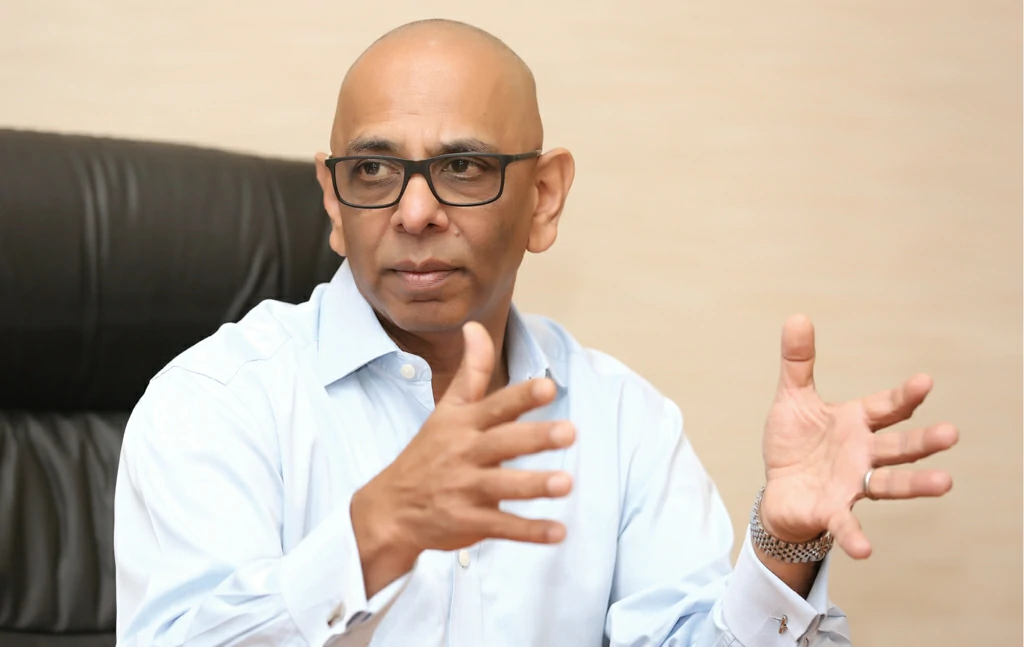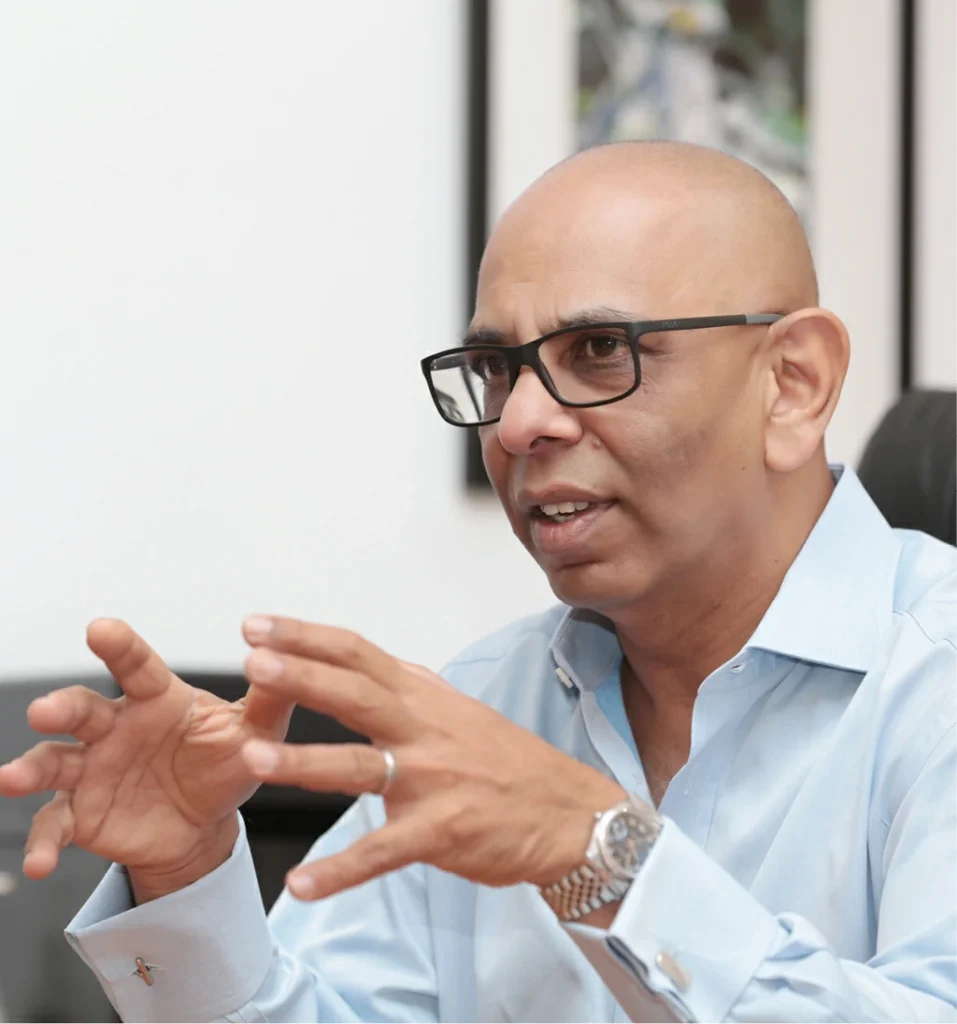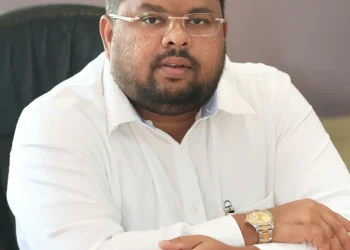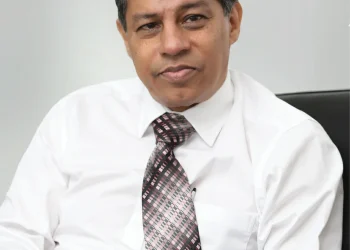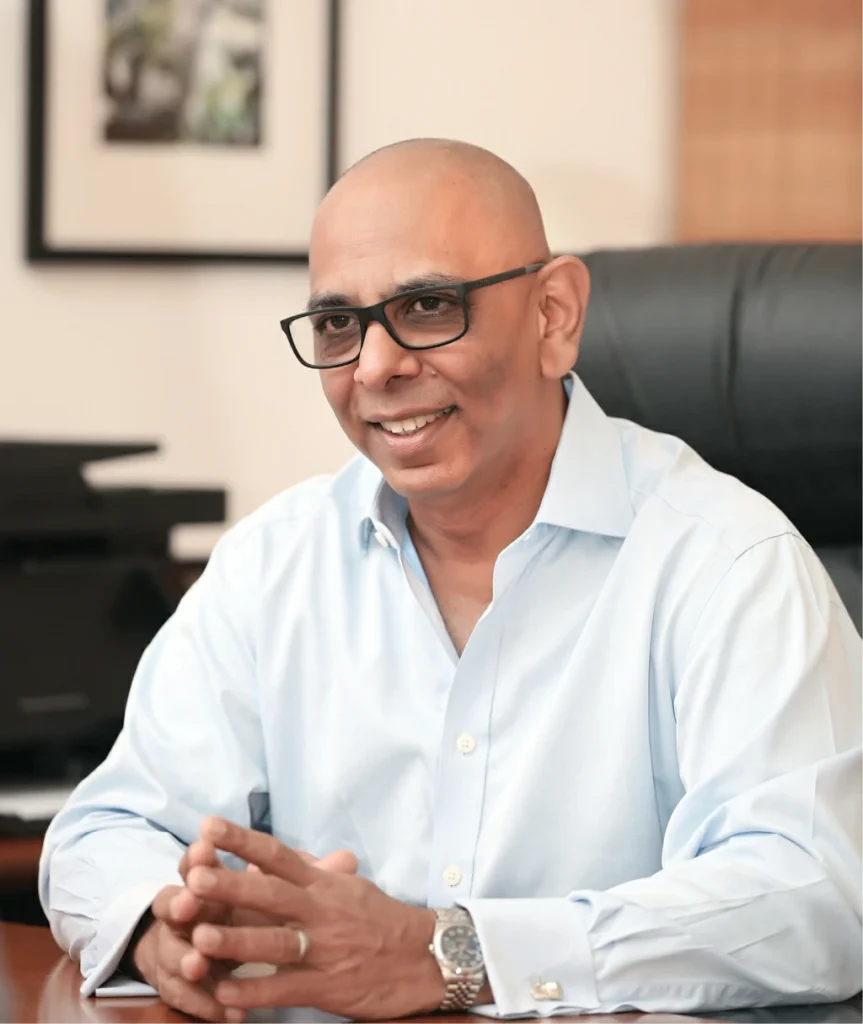
Dileepa Wjesundera is the Group Chief Executive Officer of the telecommunication giant of the country – Sri Lanka Telecom. With the Group undergoing a process of transformation, much has been achieved in providing the latest and the best technologies to the consumer. The SLT Group has now come together as one portraying a single vision. As Sri Lanka moves towards greater development, SLT will be a strong partner that propels the country forward. Dileepa Wijesundera stressed that as SLT continues to introduce products and services, the consumer too should change the way they think in order to achieve the maximum.
By Udeshi Amarasinghe
Photography Mahesh Bandara and Menaka Aravinda
SLT is the telecommunication giant of the country, can you elaborate on the progress of the Group since your appointment as Group CEO?
The most important aspect is that the Group has come together as one. Initially Mobitel was not operating strictly within the Group, but now all the subsidiaries come under the Group CEO, including Mobitel. That was a major step in creating synergy between the various sections. There are many areas where we work together and present a common front. By creating synergies, we will be able to reduce cost. But the most important aspect will be that any customer coming to SLT will have a single point of contact. This was a major area in which we made progress in this short period of time.
In the last two years, we have had the highest infrastructure investment in the company. This involves new products such as LTE, which is a fixed wireless product, PEO TV and FTTH, fiber to the home. Therefore, when we move into areas that we cannot reach with our fixed line – fibre optic or copper – we have the wireless LTE product. That is for both voice as well as data. This is a major achievement and we have been increasing our investment in the product.
The Most Important Aspect Is That The Group Has Come Together As One…All The Subsidiaries Come Under The Group CEO, Including Mobitel.
Similarly, the other major improvement is fibre to homes and fibre to businesses. We introduced this product in 2014, and have been increasing capacity since then. This is a premier product; there is a misconception that every copper connection can be replaced by fibre. That is not true. The fibre product gives speeds up to 100 megabits per second, facilitates significantly higher data capacities and incurs a higher per-line cost. Thus, the fibre product is more suited for highly dense areas and for customers whose data requirements cannot be fulfilled by copper or fixed LTE connections.
PEO TV has seen an exponential increase in sales recently because our product is very robust. We had challenges initially but we have overcome these issues and today we have increased our capacity and hope to reach 400,000 homes shortly. This is a very rewarding product, because we have the right content to reach our customers. We have good quality, and consistency. For example, if you have bad weather, you would not have an issue watching PEO TV, because it is a fixed line product. There is neither pixilation nor a drop in quality of transmission. This forms the basis for home entertainment in this country. We will be introducing more HD channels and content that is required by the users.
These are the three largest areas in terms of our products that we are focusing on. We are looking into smart cities, home automation and internet of things, which is the future. SLT is also focusing on a complete digital transformation from a communications service provider to a digital services provider. These are the major thrusts of our business.
We have not forgotten that people need to communicate with the outside world. SLT has SMW 5, a submarine cable offering 24 Terabytes of 100G speed. SMW5 was launched recently and is a world class cable with the lowest latency connecting Asia, Middle East and Europe. With SMW5, we are fully geared to fulfill the requirements of businesses and individuals who want low latency communication with the outside world. Apart from the SMW5, SLT is connected to a number of other international submarine cable systems including the SMW3, SMW4, Bharat Lanka (BL) and Dhiraagu – SLT (DS) and this makes SLT the only company that can provide backup services as well, a foundation which leaves the competition standing. In the last two years we have introduced a number of new products to set the platform for future of digital communications and services and the consumer is bound to see more and more things happening in the near future. You may not see results immediately because it takes time. You also need to bear in mind that some of these investments are capital intensive, so they cannot be done overnight – it has to be a gradual process. For example, the investment in fibre optics is not just for a few years but for decades.
We Own The Fastest Submarine Cable Out Of The Country – With Redundancy As Well – Is A Major Achievement For The Group. SLT If You Look At It, Is The Mother Ship That Connects Everything And The Rest Is Built On That.
SLT has a solid and robust infrastructure. What we now need is to bring the service layers to strengthen it, so that Sri Lankans get the best of the modern digital services. Technology changes go hand in hand with how people change as well – that is how they absorb and adapt to new technology. The next five years will be a revolutionary period.
Can you elaborate as to how ICT is pivotal for sustainable development?
To do anything you need resources, and historically those resources have been manpower-intensive. Today with ICT, we can reduce human intervention and most processes become automated. ICT will bring faster services. ICT will play a pivotal role in creating a digital economy. ICT and its applications will facilitate services that add meaningful value not only to the day to day lives of the masses but also to businesses, enterprises and the industry. ICT intervention in high social impact areas such as education, health, agriculture, transport and government would propel digital inclusion and create the ecosystem to sustain the digital economy. Digital trends such as Internet of Things (IoT), machine to machine communication, big data, cloud computing, virtualization and e-commerce would be the foundation for the next industrial revolution. While super high capacity access technologies such as fibre optics and 5G would provide the required connectivity, next generation virtualized platforms would facilitate smart solutions to the home, enterprise and the government. In a nutshell, ICT would be the life blood for the next wave of development.
Can you elaborate on how SLT is a major player in this area?
SLT is the largest infrastructure holder in this country as far as fixed infrastructure is concerned. We have about 30,000 kilometers of fibre optics already installed across the country, forming Sri Lanka’s National Backbone Network (NBN). Almost all the other service providers in the country ride on this fibre backbone network in transferring traffic between their core networks, base stations and switches. They lease SLT fibre for transmission of their traffic. SLT owns this complete nerve system and network of arteries. By default, SLT becomes a key service provider in the modern ICT scenario and that is by virtue of owning the fibre backbone network.
On the other hand, we own the fastest submarine cable out of the country – with redundancy as well – which is a major achievement for the Group. Here too, the other service providers lease capacity from our submarine cables to carry their international traffic. SLT if you look at it, is the mother ship that connects everything, and the rest is built on that. The backbone of the country’s ICT network is basically SLT.
SLT has taken major steps in terms of broadband infrastructure development. Could you elaborate on the various initiatives taken?
We have copper broadband services, which goes up to 20 megabits per second. By upgrading to fibre optics we have gone up to 100 megabits per second. Therefore, the customer has a broadband experience at the highest level in this country, without any interruptions. The fibre optic broadband also offer multiple uses, for example, at home because you have a wider bandwidth, you can enjoy PEO TV along with other digital services to the fullest. Wherever we cannot connect people with the fibre network we have introduced the LTE product, which is wireless. This gives you broadband as well as voice. Fundamentally everything we do now is based on broadband. It is all about data.
We Need To Change Our Sales Strategy And Outlook. We Need To Make SLT A Level Organization – Reduce The Hierarchy. We Need To Transform The Group Into A Modern Organization.
What do we do next? We need to introduce a greater selection of value-added products such as apps, security systems, home automation, smart cities, e-transport, e-health, e-education and other verticals on the network. Many of our new initiatives will be introduced with time. We have brought in LTE, PEO TV, increased broadband reliability and speed, increased the usage for enterprises in terms of broadband by having the SMW 5 cable and fibre optic to various businesses. We are also initiating a project where we are looking at putting broadband to high-rise buildings such as condominiums. The unsightly high rise buildings with dishes on its walls is becoming a thing of the past, thus beautifying the landscape. SLT will have its fibre, and provide services where we can actually implement the infrastructure within the building so that the occupants can enjoy the highest level of digital services.
The consumer is becoming increasingly demanding, how is SLT serving the next generation?
The consumer has always been demanding. When you look at our customer base, we have the consumers as well as our businesses. The businesses bring in a large amount of revenue proportionately. All businesses have a very high service level on delivery.
SLT needs to change its cultural background; that is the way we look at customers, our communication within the organisation, our habits, the way we look at society, the way we portray ourselves to the consumer. There are a series of things that we need to change to meet the demanding consumer. Today the consumer requires the services to be delivered extremely fast. They need the highest quality service because they have the option of moving to other service providers overnight. The customer loyalty is not as strong as it was in the past. Therefore, we are doing several changes within the company.
We need to change our sales strategy and outlook. We need to make SLT a level organisation – reduce the hierarchy. We need to transform the Group into a modern organisation so that we are more in tune with the customer. Sometimes it could be as simple as how our staff dress when they meet a customer, how they communicate with a customer, tools they use, their professionalism, how they portray themselves; all those things matter now, because gone are the days when customers came knocking on our door. We need to go to the customer. There were times when customers would wait two years for a phone connection. Those days are gone. Most of the employees at SLT have been with the organisation for over 30 years. They need to change their thinking, which we are beginning to do. Our recent sales efforts are really breaking ground.
The Fact That We Have Our Own Cloud, At This Early Stage, Is Digital Transformation. We Have Applications On The Cloud As Well, Which Some Of The Industries Are Beginning To Use.
This organisation hails from a typical government or departmental background, but it is a listed company now and it needs to portray that image strongly. We have a young force in sales who are now adapting to the new culture much faster than others.
Can you elaborate on how SLT is empowering and supporting the Government in terms of connectivity?
We have the Local Government Network (LGN); we have completed 350 government departments in phase 1 and in phase 2 and we will go up to 800. We have been given the project as we are the only license holder for fibre optic in the country. Once LGN 2 is complete, we will be connecting all government departments as one network. That is a major achievement. We also provide our services to other government departments independently and we hope that the new tier 3 data centre, that will be launched in a month’s time, will form a location for the Government to host its data as well and use our data recovery centre set up to the highest international standards.
What can you tell us about the progress in digital transformation?
Progress in digital transformation happens as we are watching. I would say that, if compared with certain parts of the world, we have advanced beyond many countries. There is much more work to be done in digital transformation in areas such as home automation and smart cities. If we look at some of the developed countries, construction is fairly standardized and home automation products fit almost perfectly. In Sri Lanka construction standards vary greatly. Therefore, it becomes a challenging task.
In Colombo, fibre optic is available in most places today. We have excelled in that direction, but in terms of value added, digital transformation must take place together with the country’s progress as well. Over the next two years there will be a fairly big upward movement. We also have the SLT Cloud, which we launched a year and a half ago for enterprises. We will be bringing SLT Cloud within the reach of the consumer. The fact that we have our own cloud, at this early stage, is digital transformation. We have applications on the cloud as well, which some of the industries are beginning to use. It will be a gradual progression, but I would say we are continuously changing.
Thoughts on the industry in general? What more can be done?
The telecom industry is a saturated market. However, there is a lot of opportunity for fixed line providers to reach remote areas of the country, which can be further developed. The Government needs to look at the taxation policy on telecommunication so that we have the edge and the ability to invest in infrastructure. There has to be some movement towards looking at the international call rates, because this has gone up recently and is a hindrance to the business. A grey market grows with the increase in international call charges, which in return will reduce revenue to the State. If we look at Europe they reversed their policy and reduced international call charges. As a result, the grey market disappeared, whereas in Sri Lanka they increased the rate, which is not good for business.
We need to introduce ICT services to schools, so that the next generation is aware of what’s available. Affordability must be a prime factor so that people can actually use ICT services. Today everyone is on their mobile phone using data. Data should be affordable. Currently, Sri Lanka has some of the lowest rates. But we can provide bigger volumes for people to use and they need to utilize different platforms as well. Many changes need to be done to legislation as well, so that people can start embracing most of the modern services. E-learning has to be done in a big way and E-commerce will come, no doubt, hand in hand.
Strategic direction for the telecommunication giant?
The strategic direction is to transform from being a communication service provider to a digital service provider. That is the strategic direction for the Group. To do that we have the NGN backbone that we are developing. We need to change our practices, improve the quality of service, and introduce more value added products and benefits to the user. Today as we know, if you introduce a new app, it goes viral in no time. We need to start looking at all these key value added products to penetrate the market.
Can you tell us about yourself?
I qualified as a civil engineer in the UK and completed my Masters in the UK as well. I have been a civil engineer during the first part of my career. After which, I moved into the oil and gas sector, with one of the largest petrochemical oil and gas companies in the world – Halliburton. It was known as M W Kellogg at the time. I moved to Canada and joined the power generation sector. I worked for Babcock and Wilcox, where I was the Director – Business Development for Asia Pacific and China for many years. We established power plants in various parts of the world. I was the Chairman of Sri Lanka Ports Authority for a brief period. Subsequently I joined the airline industry. I was Head of Qatar Airways cargo business worldwide for six years in Doha. Thereafter I returned to Canada and joined Emirates. I was looking after their cargo business in Canada for two years. I returned to Sri Lanka and was appointed to this position as Group CEO of SLT.
We Will Keep Improving What We Do. If People Also Embrace The Digital Change, We Are Already There To Serve Them, Have Confidence In SLT.
I am a very simple person and I believe in corporate discipline. I do not believe in the publicity side of life but I believe in getting my corporate responsibilities done. I suppose that is where I may have to look at things differently, because at SLT there is a certain degree of publicity that comes with the work.
I am a family man. I spend a lot of time with my wife Dhashi, daughter Shiana and my sons Chum and Ruw who are in Canada whenever I can. I value my personal life.
Concluding message to the reader?
SLT is a giant. There’s bound to be issues as people tend to compare a fixed company with a mobile company. These are two different sectors. Compared to fixed operators anywhere else in the world SLT has very good standards. We are at times better than the services provided in the western world as well, which has been communicated to me on many instances. That is very encouraging.
When you have 1.1 million fixed line customers, you will have a few thousand complaints every day. That is the nature of any business, whether it is a road service, airline service or telecommunication provider. But we tend to stay on top of it and provide the confidence to our customers. We are there to serve you and we are open to any criticism. We will keep improving what we do. If people also embrace the digital change, we are already there to serve them, have confidence in SLT.
